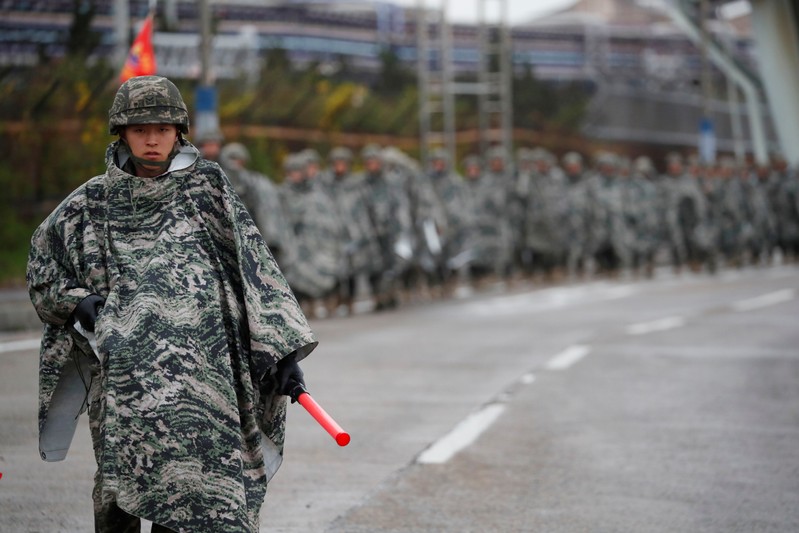
FILE PHOTO: Cattle feed in a field in Golden Bay, South Island, New Zealand March 29, 2016. REUTERS/Henning Gloystein
December 20, 2018
By Praveen Menon
WELLINGTON (Reuters) – Economic growth in New Zealand slumped to its slowest pace in nearly five years in the third quarter, with the manufacturing and farm business taking a hit and stoking talk the central bank could put a rate cut back on the table next year.
The gloomy data sent the local dollar skidding, and comes as low business confidence under Prime Minister Jacinda Ardern’s Labour Party-led coalition and headwinds from U.S.-China trade tensions, have all raised risks for New Zealand’s growth outlook.
Gross domestic product grew 0.3 percent quarter-on-quarter in the three months to September, well off the surprise 1 percent pace of the previous quarter, Statistics New Zealand said on Thursday. It marked the lowest quarterly growth since the December quarter of 2013.
The number also easily missed analysts’ growth expectations of 0.6 percent and the Reserve Bank of New Zealand’s (RBNZ) forecast of 0.7 percent, with the manufacturing sector contracting sharply.
ANZ bank said it was now forecasting a 25-basis-point cut in the Official Cash Rate (OCR) in November 2019, with a further 50 basis points of cuts to come over 2020, taking the OCR to 1.0 percent.
“With downside risks accumulating, we are happy to jump to the cut side of the fence,” ANZ’s Chief Economist Sharon Zollner said.
ANZ said the latest figures increases downside risks to the RBNZ’s outlook for growth to accelerate to 3.4 percent in 2019, adding the central bank may not be confident the economy has enough momentum to drive inflation sustainably at the midpoint.
Governor Adrian Orr has said the next policy move would depend on how the economy fared, with the benchmark rate held at a record-low 1.75 percent since late 2016. In the last policy meeting, RBNZ said it sees annual inflation at 1.9 percent by December 2019.
The New Zealand dollar dropped by 0.3 percent to trade at US$0.6747, its lowest in five weeks.
The currency had sunk earlier after U.S. Federal Reserve raised interest rates and said it was keeping the core of its plan to tighten monetary policy intact.
Yields on New Zealand government bonds <0#NZTSY=> were down by 6 basis points.
MANUFACTURING WEAK
Annual growth in the third quarter came in at 2.6 percent, against analysts’ forecasts of 2.8 percent.
“The goods-producing industries fell 1.0 percent, dragging down overall growth this quarter,” Stats New Zealand national accounts senior manager Susan Hollows said in a statement, adding that the manufacturing sector weakened the most.
Primary industries grew 2.2 percent, while growth in service industries slowed to 0.5 percent.
The center-left government of Prime Minister Ardern has been slammed by critics for the populist measure rolled out in her first year in office, with business confidence taking a hit and promoting warnings from economists of broadening risks to growth.
Ardern hiked minimum wages, restricted foreign homebuilding, curbed immigration and has said she would introduce a “wellbeing” budget next year.
Although businesses were much less pessimistic in December than in the previous month, firms’ confidence has fallen since Ardern took power.
New Zealand’s Treasury department last week trimmed the country’s growth forecast for 2019 as it cautioned of risks from global trade frictions and slowing immigration.
Governor Orr could cut rates if the global environment deteriorates more quickly next year, or domestic growth or inflation indicators turn softer, ANZ’s Zollner said.
“The governor is not the type to die wondering, and appears likely to be proactive in managing downside risks.”
(Additional reporting by Charlotte Greenfield; editing by Tom Brown & Shri Navaratnam)

